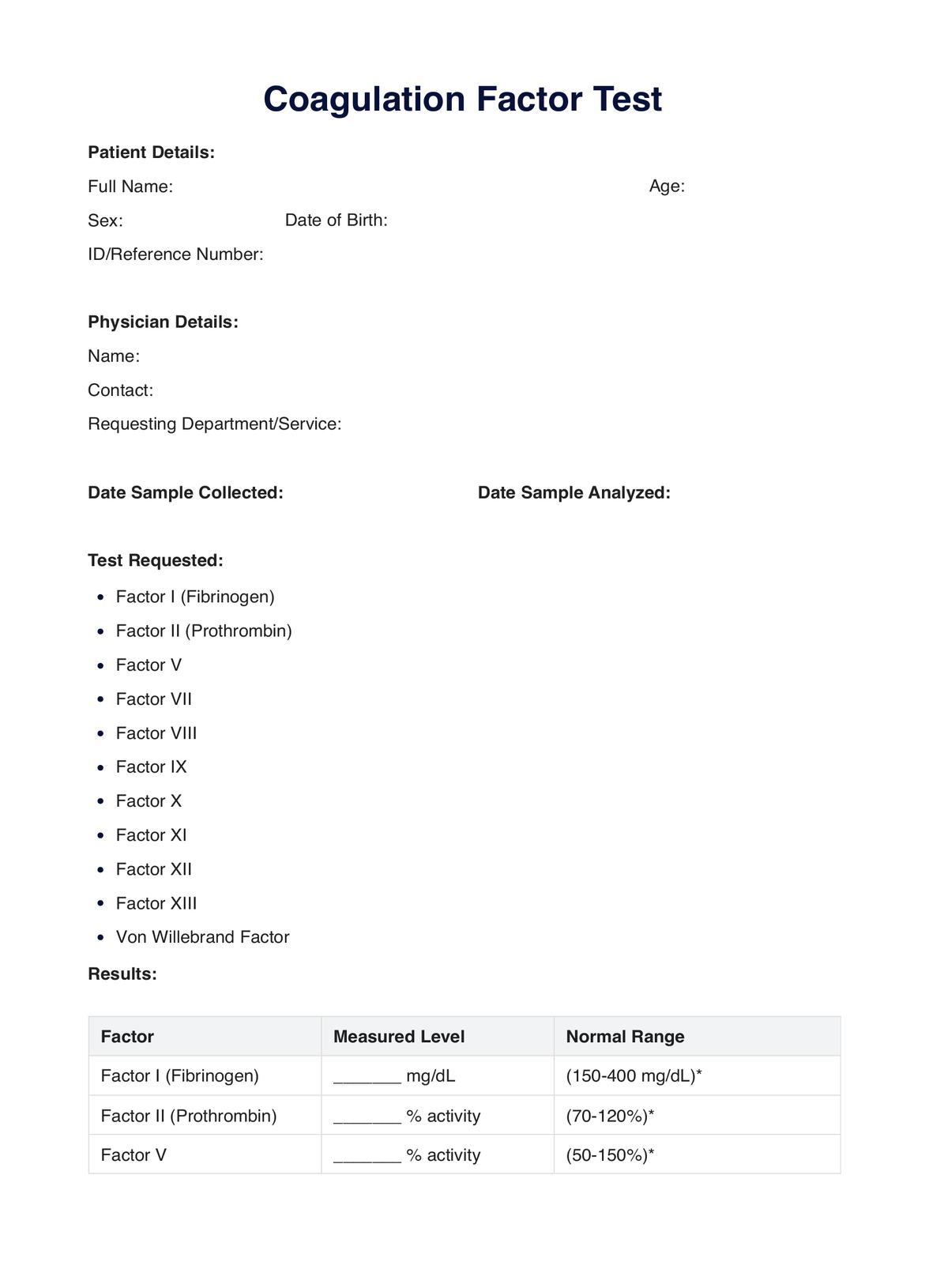Physicians, especially hematologists, often request Coagulation Factor Tests when they suspect a bleeding disorder.

Coagulation Factor
Understand your body's clotting ability with a Coagulation Factor Test. Assess risk, diagnose disorders, and guide treatment for better health outcomes.
Use Template
Coagulation Factor Template
Commonly asked questions
These tests are used when there's a suspicion of a bleeding disorder, to monitor patients on anticoagulant therapy, or in individuals with liver disease.
They measure the levels and function of various coagulation factors in the blood, helping diagnose and manage bleeding disorders.
EHR and practice management software
Get started for free
*No credit card required
Free
$0/usd
Unlimited clients
Telehealth
1GB of storage
Client portal text
Automated billing and online payments











